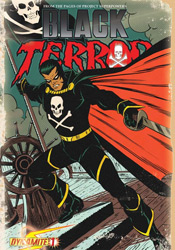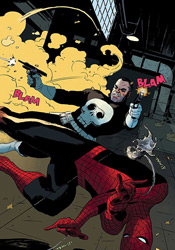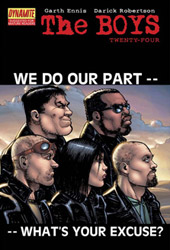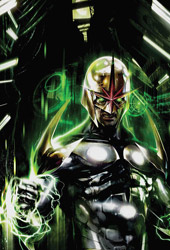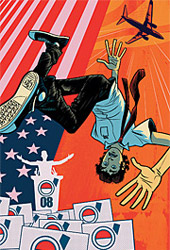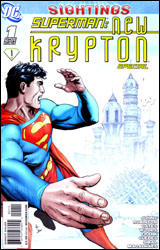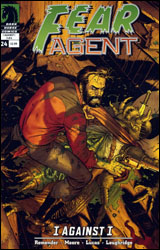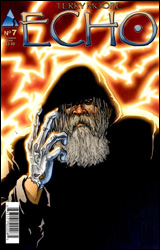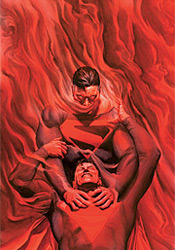
Alex Ross wears two hats in this issue: those of both writer and artist, and both are hauntingly familiar. While I wasn't too keen on the idea of revisiting a story with such a well-defined beginning and ending, especially one as successful and far-reaching as Kingdom Come, if DC had to go back to that well I'm glad they chose one of the original creators to take them there. Under Ross's eye, this issue has successfully recaptured both the look and the feel of the original series. The spaced out, paranoid older Superman that's come to our reality isn't far removed from the last time we saw him, and reminds me of just how well written that series really was. He's haunted by constant flashbacks to the events of that classic mini-series, at once reinforcing the sense of sadness and loss that invade his personality and reminding readers of the story's most memorable moments. In many ways, Earth-22 Superman is more real, more understandable than his regular continuity brother. His faults make him relatable, his losses lend humanity.
It's an odd sensation to browse an issue of Alex Ross artwork that's been composed with pencils rather than paint. It's a much more stark, contrasting effect, and one that's not unwelcome. Gone are the lush, vibrant hues and the smooth, lifelike palettes that helped his work reach the top of the industry in the early ‘90s, but in their absence I've grown to appreciate the man's eye for composition. This issue carries the same panache and detail that I so enjoyed during his heyday, but the more everyday color scheme grounds it in a much more identifiable tone. It was easy to write off the original Kingdom Come as impermanent, a dream, thanks to those soft, ethereal visuals. Now that he's working strictly with pencils and inks, Ross's artwork has a rougher edge and feels more consequential, more real. Or it at least has a common visual footing with the rest of the mainstream DC universe, so it feels more at home.
This issue would work just fine as a standalone reminder that you should really go back and re-read Kingdom Come. That it adds a relevant modern narrative is just icing on the cake. No matter your feelings on the publisher's decision to revisit a world that would have been just fine as it was, this is worth an unbiased look. It isn't often that you'll see lightning in a bottle twice in the same place, but Kingdom Come Special: Superman is as close as I think anyone could have imagined. Buy it and enjoy the trip down memory lane.
Overall Score: 9
